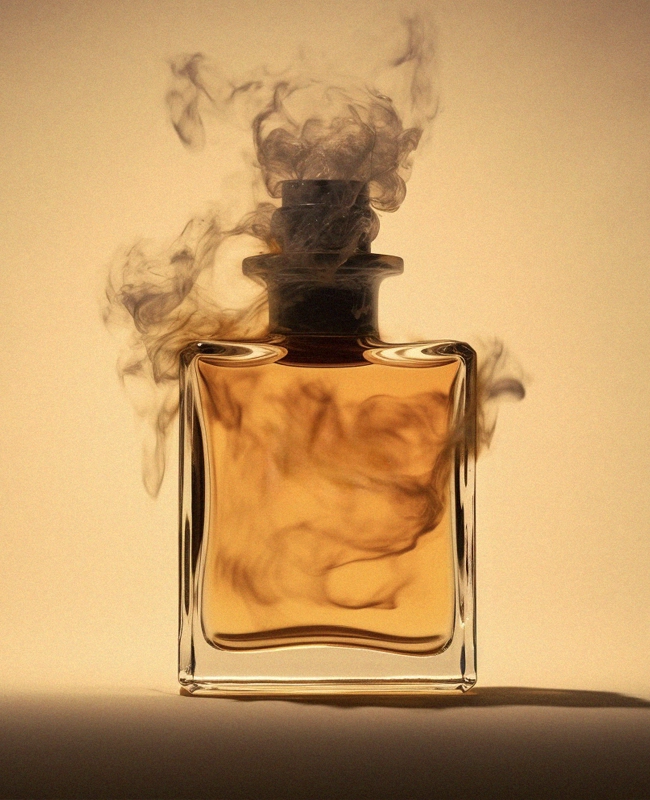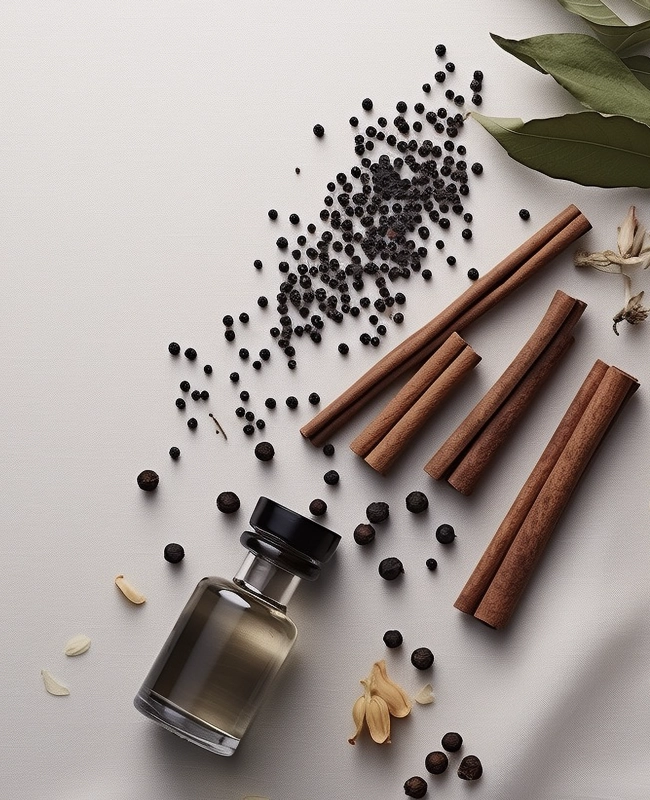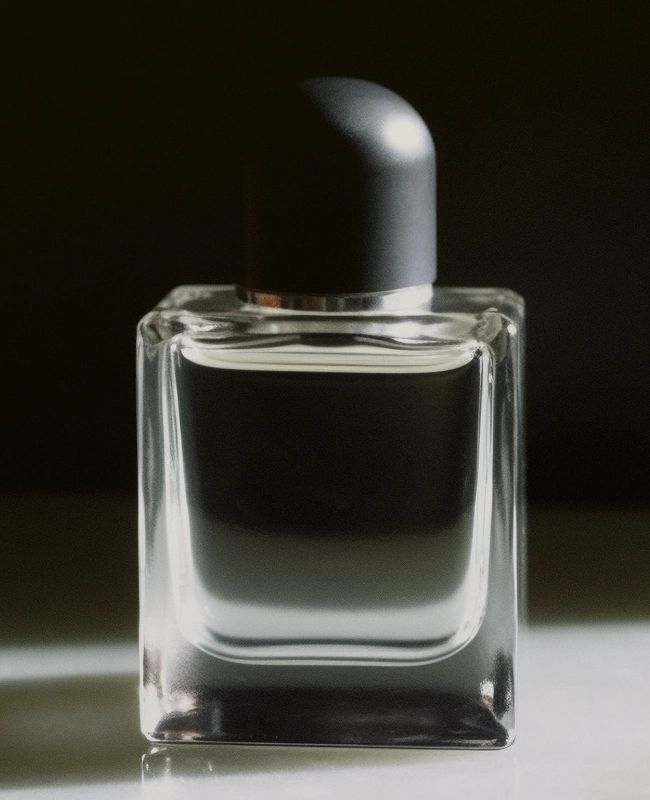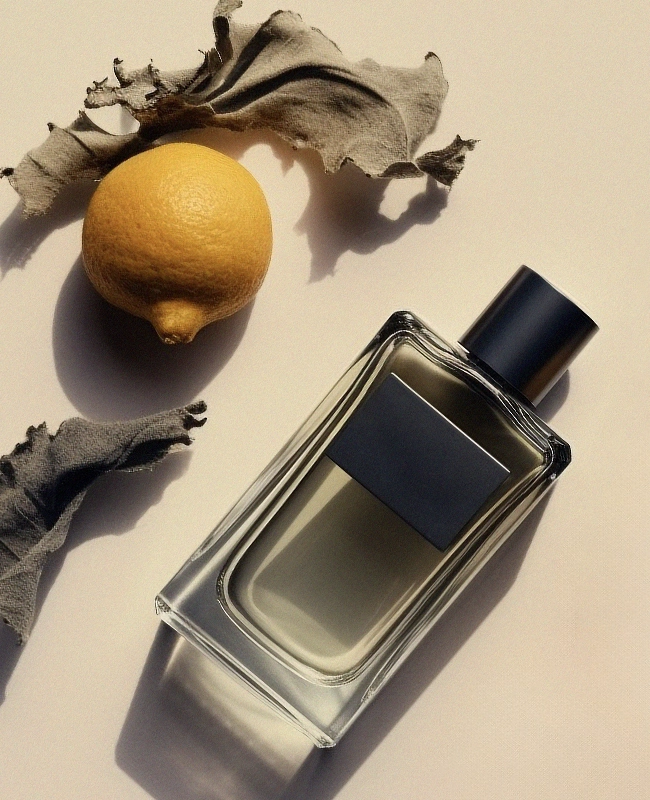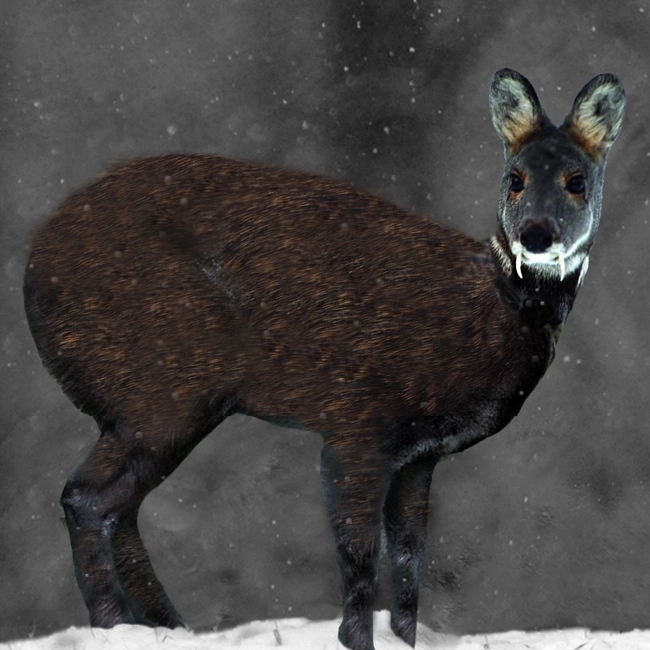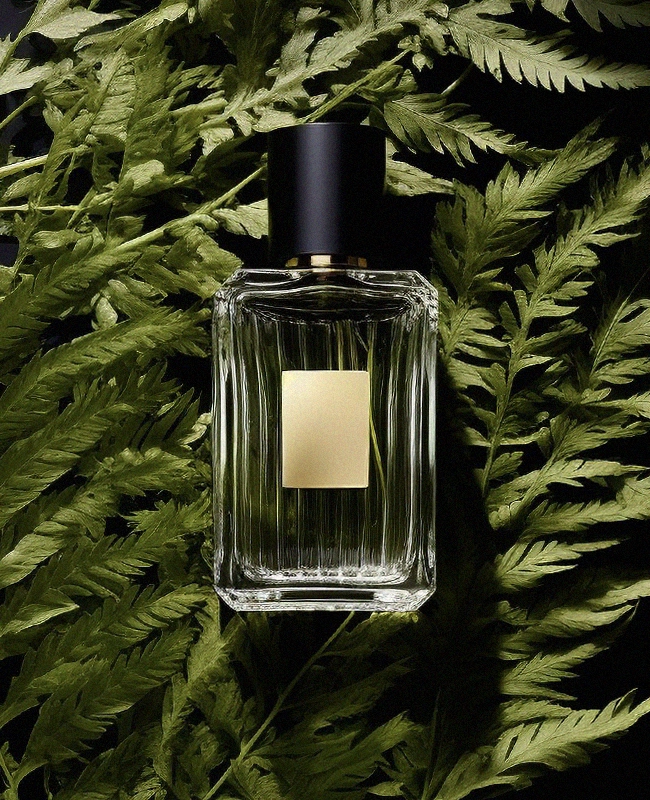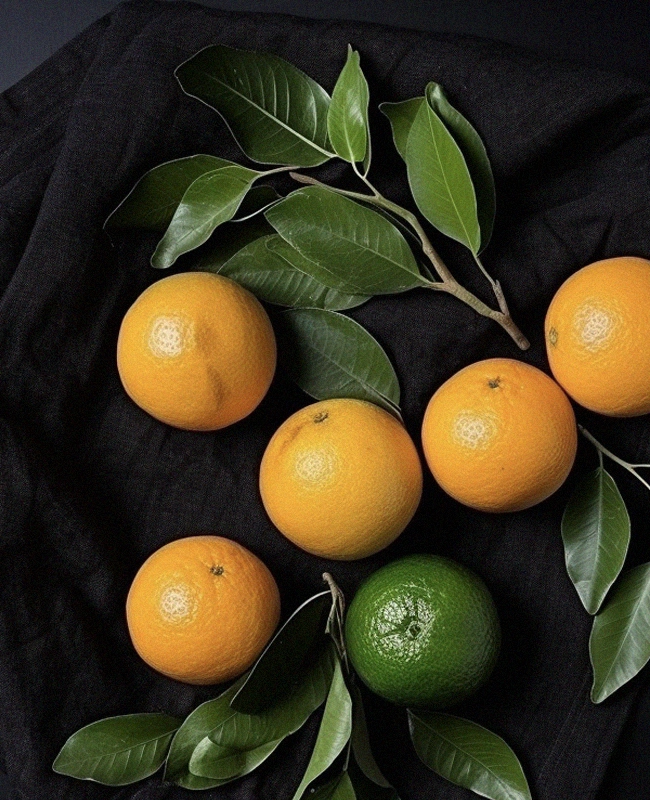
In This Article
Having an understanding of perfume notes can help you to choose the best perfume with a greater degree of success. This article explains what perfume notes are and lists some of the most common examples.
What Are Perfume Notes?
Perfume notes, also known as fragrance notes, are distinct scents that make up a perfume’s whole composition. Each note plays a specific role, contributing to the overall sensory experience of a perfume. They can come from a single ingredient or a combination of several ingredients. Arranging these notes forms the basis of making a perfume.
The notes in a perfume’s concentrate are often divided into three categories. These are: top notes, middle notes and base notes. As well as providing structure for a perfume, these categories contain notes which have a similar evaporation rate. In reality, the evaporation of a perfume is less clear-cut than this system suggests. Therefore it is helpful to consider evaporation rates as an concept rather than a certainty.
Perfume notes can be grouped into fragrance families which are based on olfactive similarities.
What Are Top Notes?
Top notes are the initial scents that hit your senses when you first smell a perfume. Often light and volatile, top notes fade away quickly, setting the stage for what is to come.
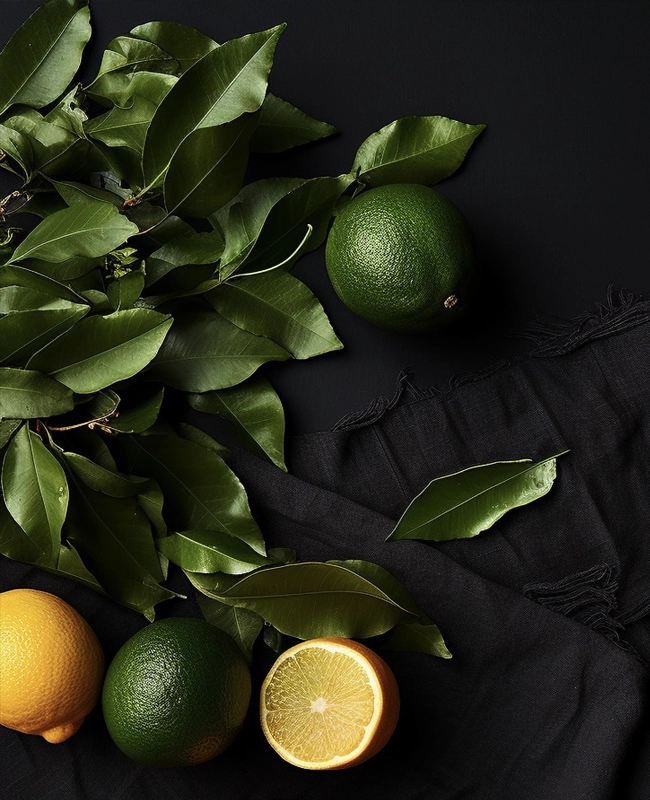
Characteristics of Top Notes
Freshness – Top notes often have a fresh or crisp character.
Volatility – Due to their molecular structure, top notes evaporate quickly.
Common Top Notes – Citrusy notes such as lemon, grapefruit, and bergamot; aromatic herbs such as mint, basil, and lavender; and light fruits such as berries and apples.
What Are Middle Notes?
As the initial presence of the top notes begins to wane, the middle notes, or heart notes, gain prominence. Lasting longer than top notes, middle notes bridge the gap between the light top notes and the deep base notes.
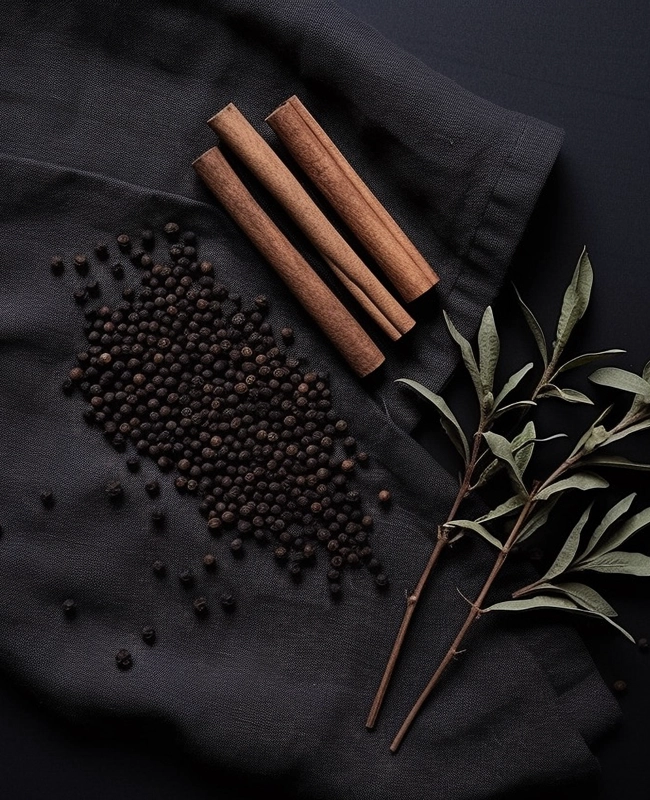 Characteristics of Middle Notes
Characteristics of Middle Notes
Balance – They strike a balance, neither too light nor too heavy, providing the main scent direction of a perfume.
Complexity – Middle notes often have a multifaceted character, offering a blend of distinct elements.
Common Middle Notes – Rich florals such as rose, jasmine, and ylang-ylang; spices such as black pepper, cardamom and cinnamon; and fuller fruits such as peach and mango.
What Are Base Notes?
Base notes are the anchors of a perfume. They provide a perfume’s depth, richness and staying power. As the name suggests, they form the base upon which the entire perfume structure rests. These notes are often rich, lingering on the skin for hours after the top and middle notes have dissipated.
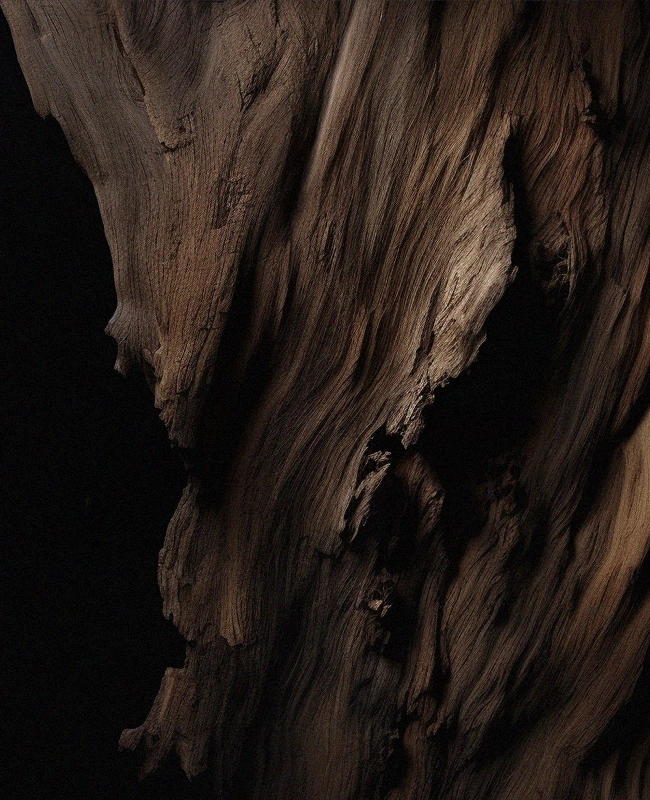
Characteristics of Base Notes
Longevity – Due to their heavy molecular weight base notes may evaporate slowly. This can cause perfume to persist for longer.
Depth – They add depth to a perfume, giving it a solid foundation.
Common Base Notes – Resinous compounds such as frankincense; woods such as cedarwood and sandalwood; and rich elements such as musk, vanilla and leather.
Common Men’s Perfume Notes
Basil
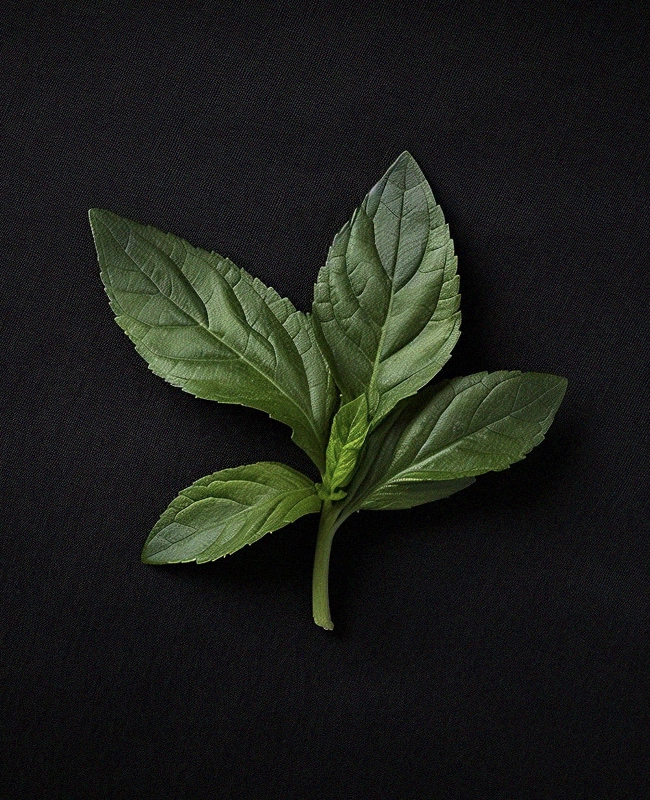
What Is Basil?
Basil, known scientifically as Ocimum basilicum, is a culinary and medicinal herb. It’s a member of the mint family and is cultivated primarily for its aromatic leaves.
What Does Basil Smell Like?
The aroma of basil is green and herbal with a hint of spiciness. It has a slightly sweet aspect, reminiscent of anise.
How Is the Scent Extracted?
Basil oil is procured through the steam distillation of its leaves.
How Is Basil Used?
Basil often features as a top note, introducing a fresh and slightly spicy dimension to scents.
Bergamot
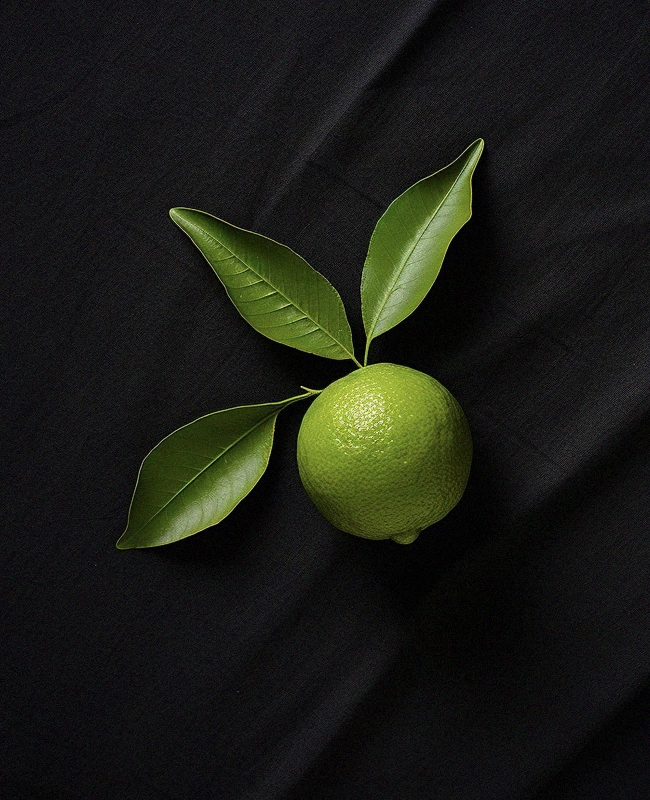
What Is Bergamot?
Bergamot is a citrus fruit, smaller and than an orange, with a unique green or yellow colour. It is primarily grown in the coastal regions of Southern Italy.
What Does Bergamot Smell Like?
Bergamot has a fresh, bright and citrusy aroma with subtle floral undertones.
How Is the Scent Extracted?
The essence of bergamot is captured by cold pressing the rind of the fruit.
How Is Bergamot Used?
Bergamot is typically used as a top note, imparting its vibrant and zesty character.
Black Pepper
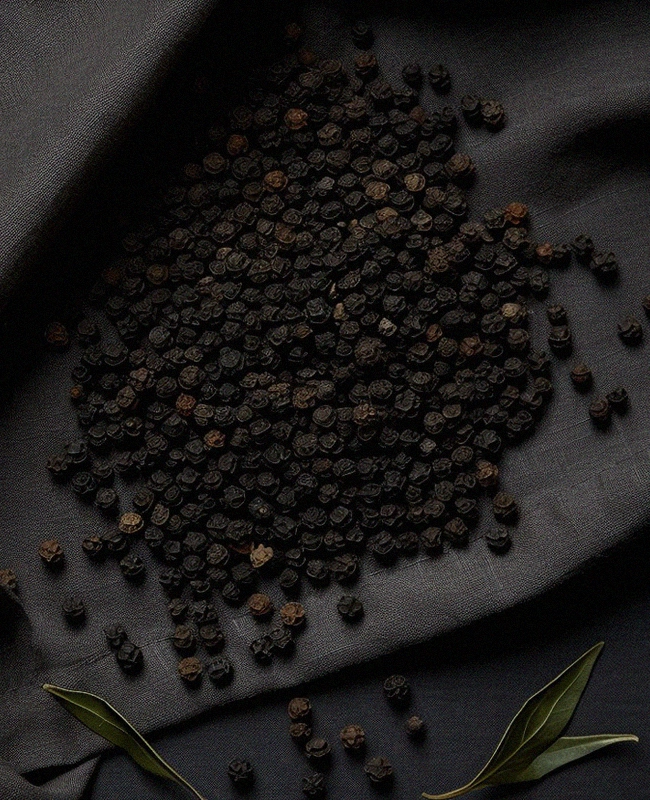
What Is Black Pepper?
Black pepper comes from the dried fruit of the Piper nigrum plant which is native to India and other tropical regions. It’s one of the world’s most traded spices and has been used for millennia.
What Does Black Pepper Smell Like?
Black pepper has a sharp, spicy, warm and slightly woody aroma.
How Is Black Pepper Extracted?
Black pepper essential oil is obtained through steam distillation of the dried fruit.
How Is Black Pepper Used?
Black pepper most often features in perfumes as a top or middle note, adding warmth and a spicy kick.
Cardamom
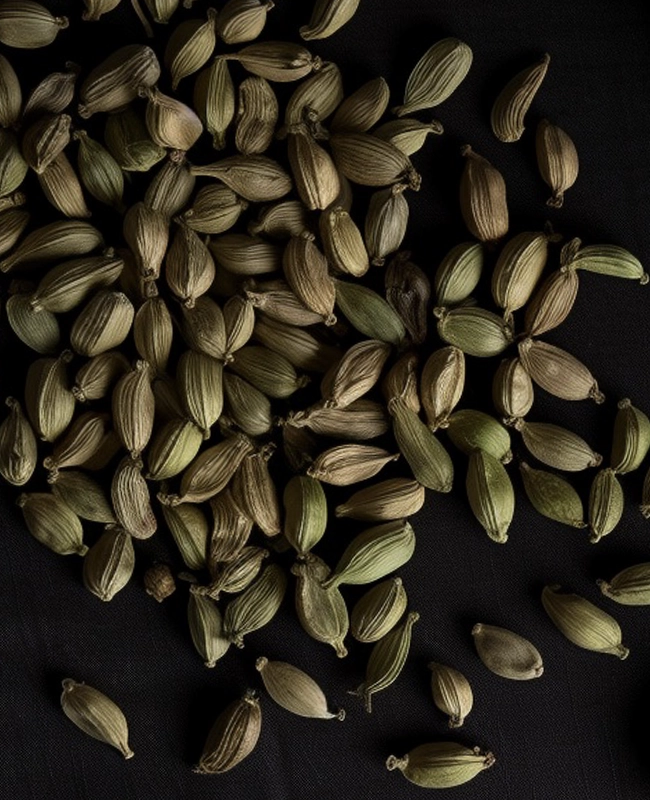
What Is Cardamom?
Cardamom is a spice originating from the seeds of various plants in the ginger family. It’s a staple in both culinary and traditional medicine practices, as well as perfumes.
What Does Cardamom Smell Like?
Cardamom has a warm, spicy aroma with hints of floral sweetness.
How Is the Scent Extracted?
The essential oil of cardamom is obtained through steam distillation of the seeds.
How Is Cardamom Used?
Cardamom is often utilised as a middle note, introducing a spicy warmth and complexity to a perfume’s middle.
Cedarwood
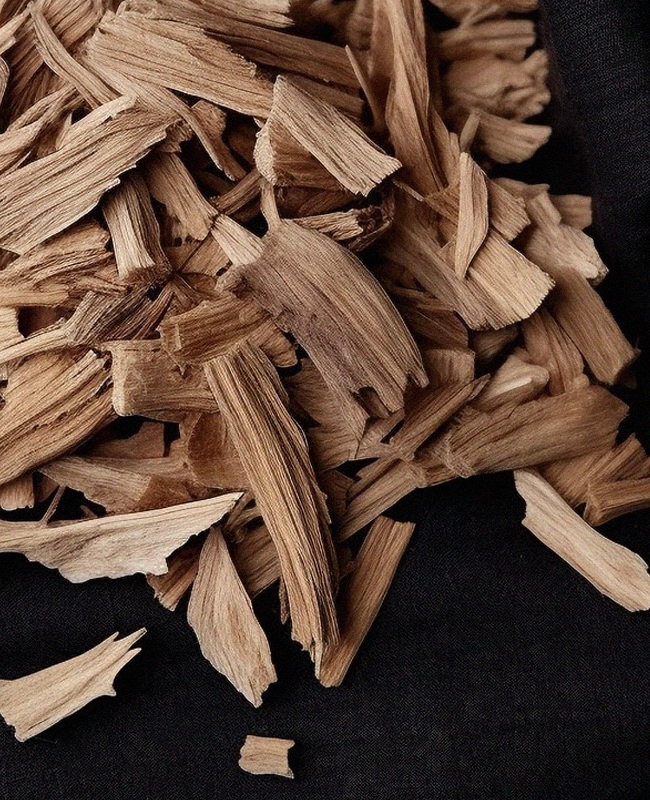
What Is Cedarwood?
Cedarwood oil is derived from the wood of cedar trees. These trees are native to mountainous regions around the world.
What Does Cedarwood Smell Like?
Cedarwood emits a woody aroma. Its scent profile is often described as dry, clean and slightly sweet.
How Is the Scent Extracted?
Cedarwood oil is extracted through the steam distillation of the wood chips and sawdust from the tree.
How Is Cedarwood Used?
Cedarwood serves as a base note in many perfumes, grounding them with its earthy aroma.
Cinnamon
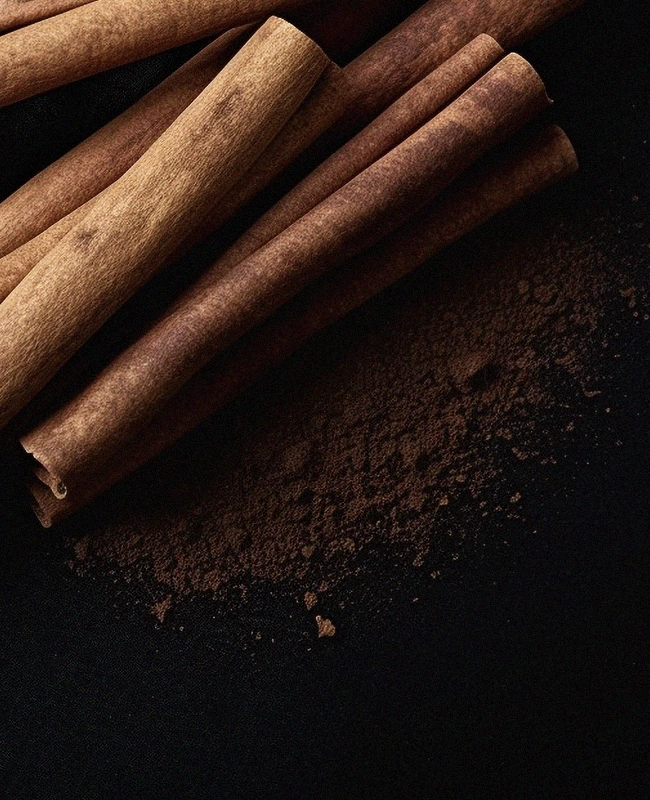
What Is Cinnamon?
Cinnamon is a spice which is derived from the inner bark of several tree species from the genus Cinnamomum. It’s a popular culinary spice and has been used for many thousands of years.
What Does Cinnamon Smell Like?
Cinnamon has a warm, spicy, woody and slightly sweet aroma.
How Is the Scent Extracted?
Cinnamon oil is obtained through steam distillation of the bark, leaves or twigs.
How Is Cinnamon Used?
Cinnamon often acts as a middle note, adding warmth, depth and a touch of spice to perfumes.
Clary Sage
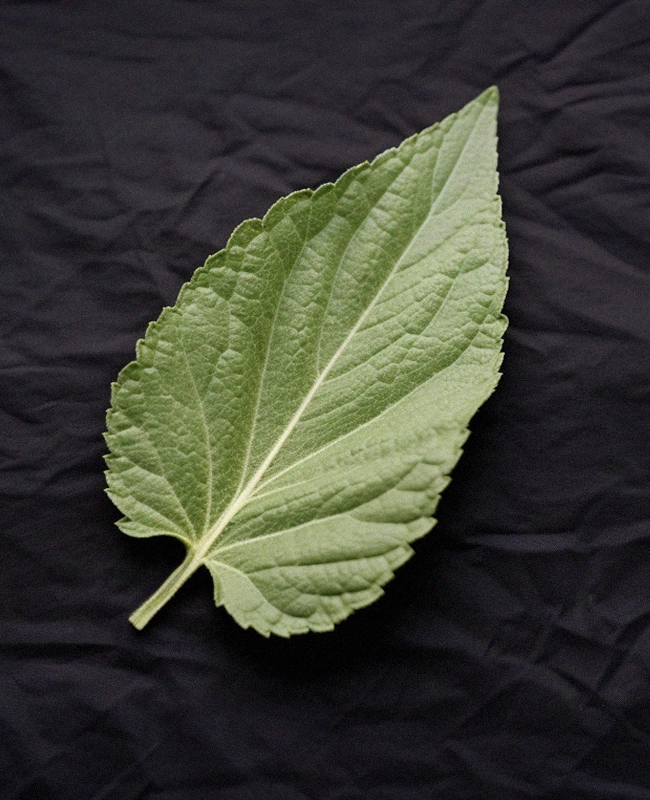
What Is Clary Sage?
Clary sage, scientifically known as Salvia sclarea, is a herbaceous plant native to the Mediterranean Basin. It is primarily cultivated for its aromatic leaves and flowers.
What Does Clary Sage Smell Like?
Clary sage exudes a clean, earthy and herbaceous aroma.
How Is the Scent Extracted?
The essential oil of clary sage is derived through steam distillation of its flowers and leaves.
How Is Clary Sage Used?
Clary sage is typically employed as a middle note in perfumes, introducing a herby, earthy dimension to perfumes.
Frankincense
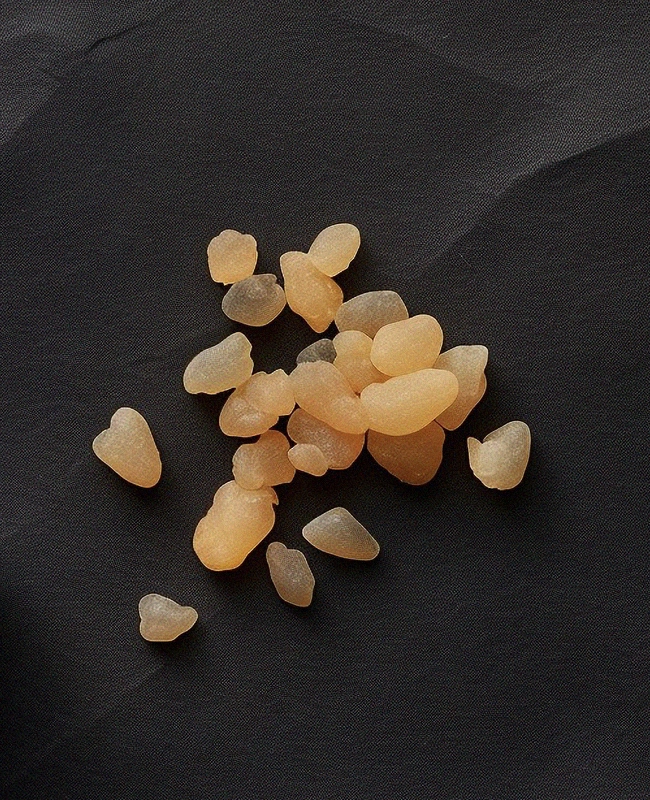
What Is Frankincense?
Frankincense is the aromatic gum resin obtained from trees of the genus Boswellia. It has been traded and used in spiritual rituals for thousands of years.
What Does Frankincense Smell Like?
Frankincense has a fresh, woody, and slightly spicy aroma with a hint of citrus.
How Is the Scent Extracted?
Frankincense oil is procured through steam distillation of the resin.
How Is Frankincense Used?
Frankincense often serves as a base or middle note, adding intensity to a perfume.
Ginger
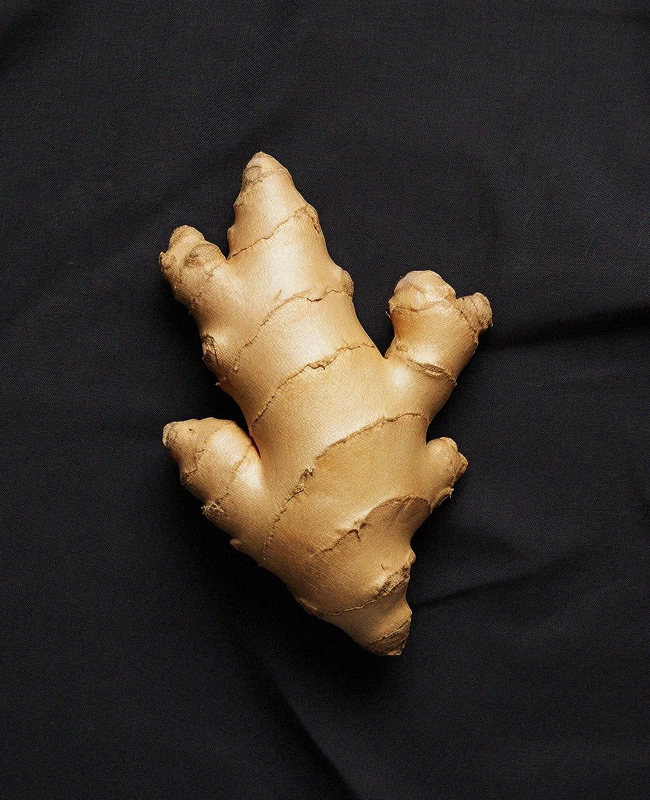
What Is Ginger?
Ginger is the underground stem part of the Zingiber officinale plant. It’s a staple in many culinary dishes and traditional medicines.
What Does Ginger Smell Like?
Ginger has a spicy, fresh and slightly woody aroma.
How Is the Scent Extracted?
Ginger oil is derived through steam distillation of the plant’s root.
How Is Ginger Used?
Ginger often features in perfumes as a middle note, introducing a spicy and vibrant character.
Grapefruit
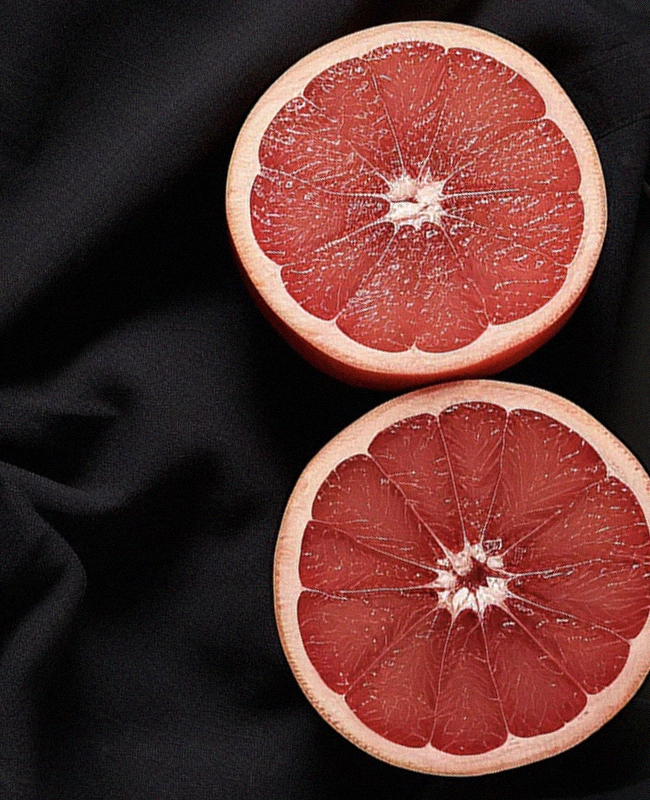
What Is Grapefruit?
Grapefruit is a hybrid citrus fruit originating in Barbados. It is a cross between an orange and a pomelo.
What Does Grapefruit Smell Like?
Grapefruit has a fresh, tangy, and slightly sharp aroma.
How Is the Scent Extracted?
The essence of grapefruit is captured by cold pressing the rind of the fruit.
How Is Grapefruit Used?
Grapefruit is most often used as a top note in perfume, imparting a fresh and zesty character.
Guaiac Wood
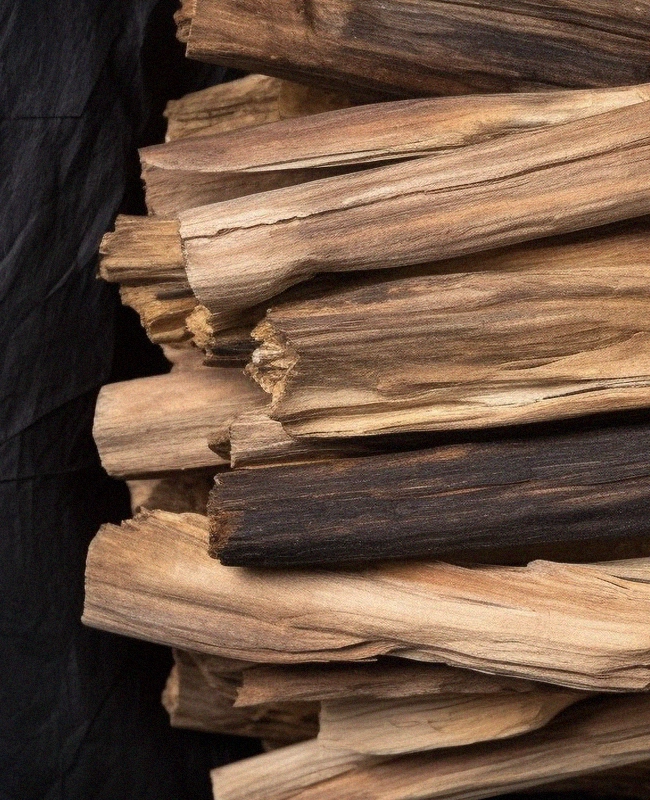
What Is Guaiac Wood?
Guaiac wood is a dense and aromatic wood derived from the palo santo tree which is native to South America.
What Does Guaiac Wood Smell Like?
Guaiac wood exudes a sweet, smoky, earthy aroma.
How Is the Scent Extracted?
The essential oil of guaiac wood is obtained through steam distillation of the wood chips.
How Is Guaiac Wood Used?
Guaiac Wood is often employed as a base note, providing depth, warmth and a touch of smokiness.
Iris
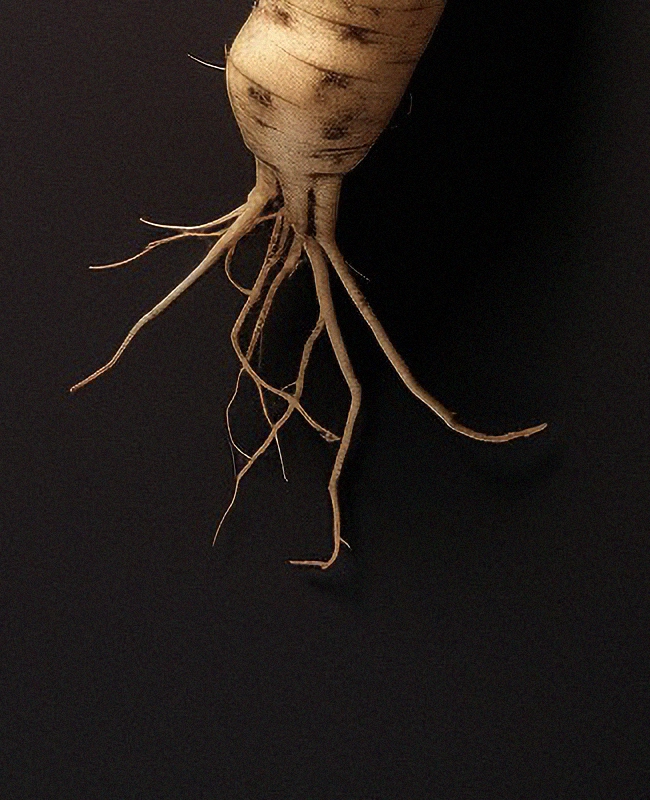
What Is Iris?
Iris refers to the underground stems of the Iris plant, particularly Iris pallida, Iris germanica, and Iris florentina. These stems, often called “orris root,” have been used in perfumes for centuries.
What Does Iris Smell Like?
Iris has a soft, powdery aroma. Its scent is often described as earthy with delicate floral hints.
How Is the Scent Extracted?
Orris butter or oil is derived through steam distillation of the dried stems. These stems are often aged for several years to develop their full aromatic profile.
How Is Iris Used?
Iris often serves as a base note in perfumes, adding a soft, powdery, and woody foundation.
Juniper Berry
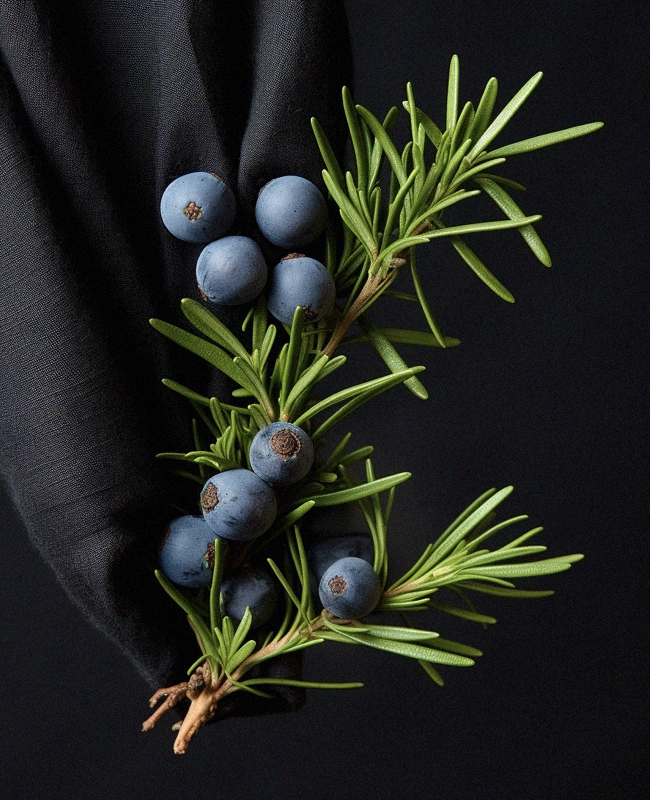
What Is Juniper Berry?
Juniper berry is the aromatic fruit of the Juniperus communis tree. While often referred to as a berry it’s technically a cone with fleshy and merged scales.
What Does Juniper Berry Smell Like?
Juniper berry has a fresh, crisp and woody aroma. Its scent is reminiscent of pine and has a hint of pepperiness.
How Is the Scent Extracted?
The essential oil of juniper berry is derived through steam distillation.
How Is Juniper Berry Used?
Juniper berry is most often used as a top or middle note, introducing a fresh, forest-like dimension.
Lavender
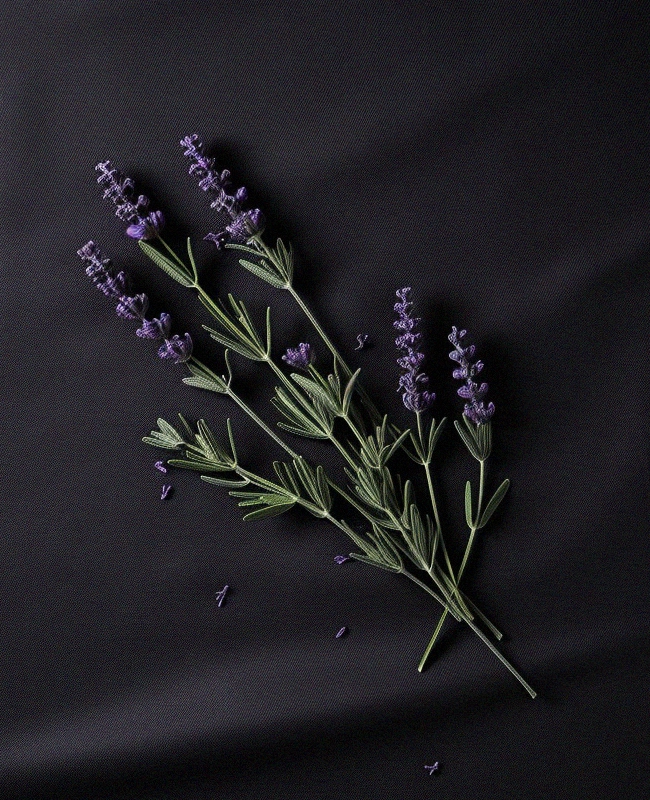
What Is Lavender?
Lavender is a flowering plant known for its distinctive scent and purple flowers. It’s native to the Mediterranean region.
What Does Lavender Smell Like?
Lavender has a fresh, floral aroma with subtle herbaceous and slightly woody undertones.
How Is the Scent Extracted?
Lavender oil is procured through steam distillation of the flowering tops of the lavender plant.
How Is Lavender Used?
Lavender is versatile and often used as a top or middle note to introduce a clean, floral dimension.
Leather
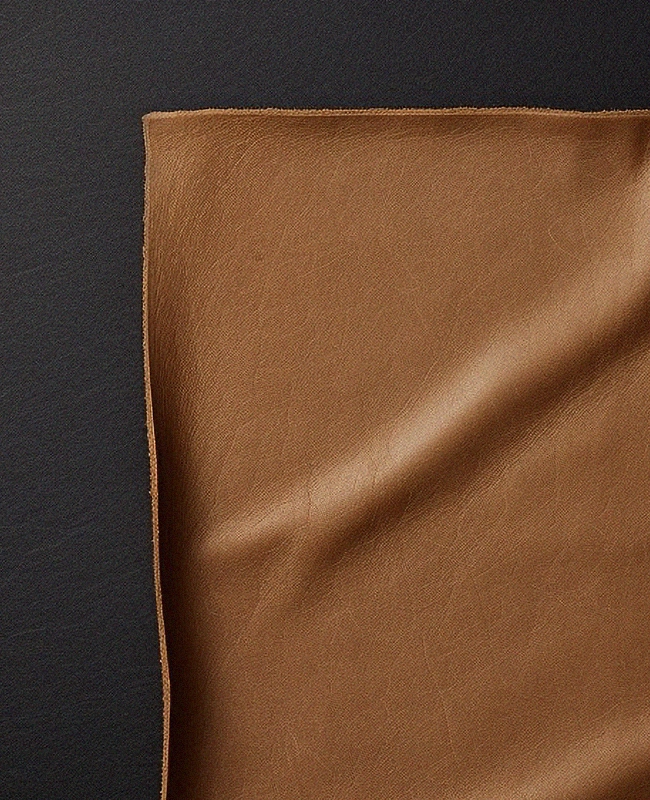
What Is Leather?
Leather is not a single natural ingredient but a scent profile reminiscent of tanned animal hides.
What Does Leather Smell Like?
Leather has a rich, deep aroma which is characterised by smokiness and woodiness.
How Is the Scent Extracted?
The leather note isn’t directly extracted. It is created using various natural and synthetic ingredients to mimic the distinctive aroma of animal leather.
How Is Leather Used?
Leather often serves as a base note in perfumes offering depth and richness.
Musk
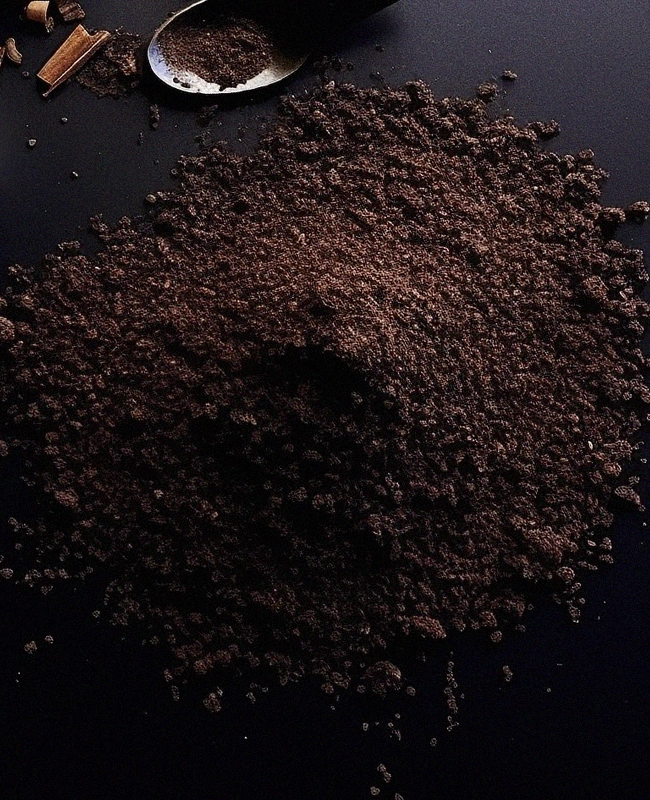
What Is Musk?
Traditionally, musk referred to a strong-smelling substance secreted by the male musk deer. Today, due to ethical and sustainability concerns, most musk scents in perfumes are synthetic.
What Does Musk Smell Like?
Musk has a warm, earthy, and slightly sweet aroma. Its scent is sensual and often described as skin-like or powdery.
How Is the Scent Extracted?
Natural musk was extracted from the glands of musk deer. Modern musk notes are primarily synthesised in labs to achieve a similar aromatic profile.
How Is Musk Used?
Musk serves as a base note in many perfumes, providing depth and earthy warmth.
Myrrh
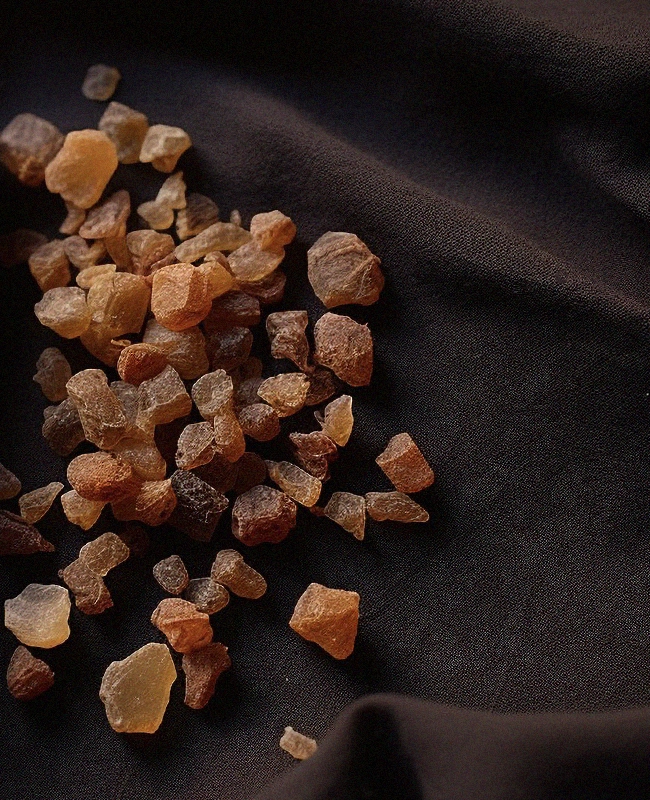
What Is Myrrh?
Myrrh is a resin obtained from the Commiphora species of trees. It has been used for millennia for its aromatic and medicinal properties.
What Does Myrrh Smell Like?
Myrrh smells deep, resinous, warm, earthy and intense.
How Is Myrrh Extracted?
Myrrh oil is procured through steam distillation of the resin.
How Is Myrrh Used?
Myrrh often serves as a base note in perfumes.
Neroli
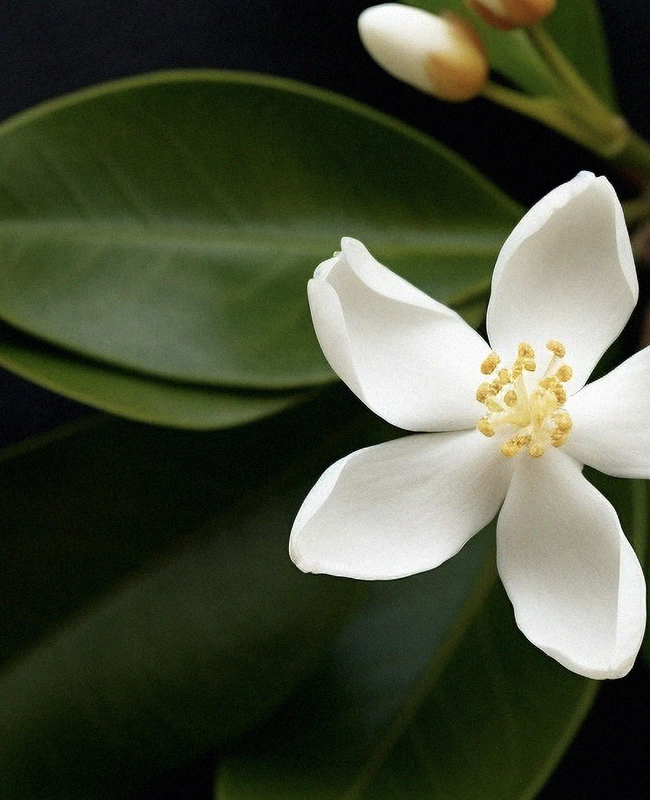
What Is Neroli?
Neroli is the essential oil derived from the fragrant blossoms of the bitter orange tree, Citrus aurantium.
What Does Neroli Smell Like?
Neroli’s scent is citrus, fresh, green and floral.
How Is the Scent Extracted?
Neroli oil is obtained through steam distillation of the fresh flowers. The synthetic form nerolidol is often used as a substitute.
How Is Neroli Used?
Neroli is often used in perfumes as a middle or top note to introduce freshness.
Oakmoss
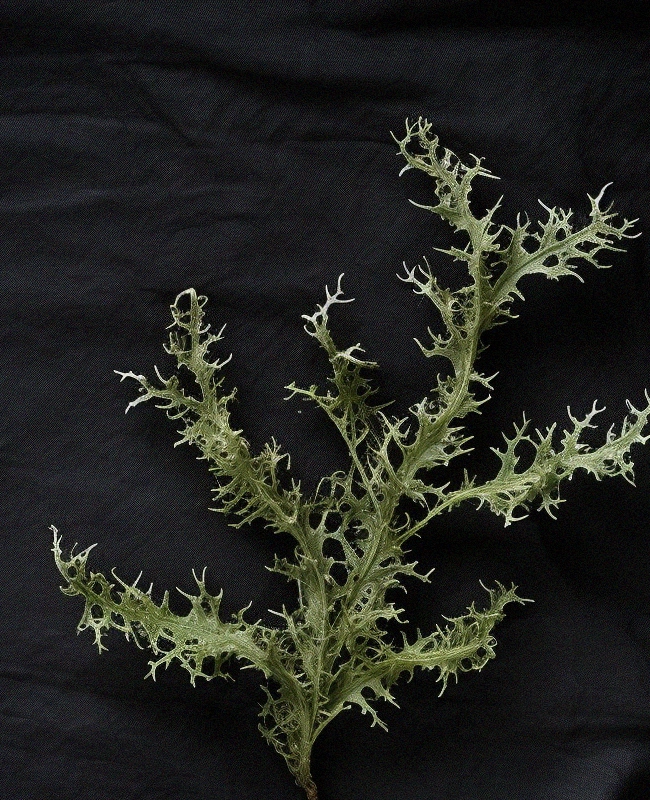
What Is Oakmoss?
Oakmoss is not a moss, it is a lichen that grows primarily on oak trees. A lichen is a cross between a fungus and an algae.
What Does Oakmoss Smell Like?
Oakmoss has a rich, mossy, earthy scent which is warm and intense.
How Is the Scent Extracted?
The essence of oakmoss is captured through solvent extraction.
How Is Oakmoss Used?
Oakmoss serves as a base note, providing depth and earthiness.
Oud
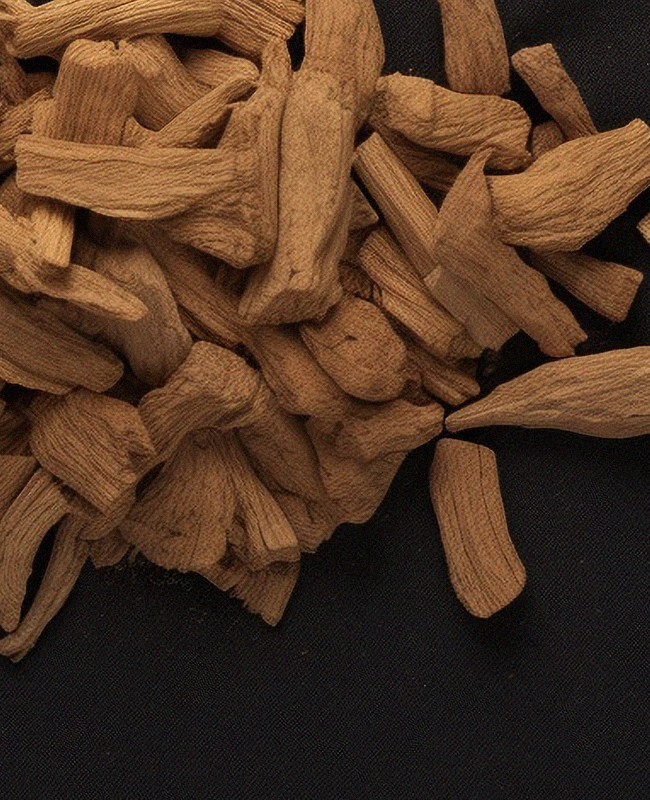
What Is Oud?
Oud, which is also known as agarwood, is a dark resinous heartwood that forms in Aquilaria trees when they become infected with a specific type of mould. It’s one of the most expensive raw materials used to make perfumes.
What Does Oud Smell Like?
Oud has a complex and intense aroma that’s woody, smokey and slightly sweet.
How Is the Scent Extracted?
Oud oil is obtained through steam distillation of the resin-rich wood.
How Is Oud Used?
Oud often serves as a base note in luxury perfumes, providing depth and warmth.
Patchouli
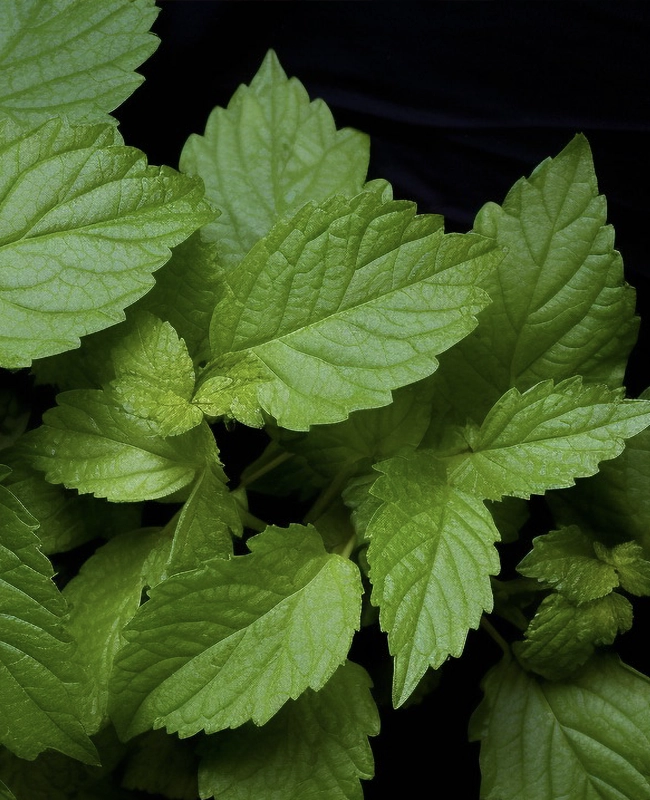
What Is Patchouli?
Patchouli is derived from the leaves of the plant Pogostemon cablin. It has been used for centuries in traditional medicine and as an aromatic herb.
What Does Patchouli Smell Like?
Patchouli has a deep, earthy and woody aroma with a hint of musk.
How Is the Scent Extracted?
Patchouli oil is procured through steam distillation of the dried leaves.
How Is Patchouli Used?
Patchouli is most often a base note, grounding perfumes with its deep and earthy character.
Pink Pepper
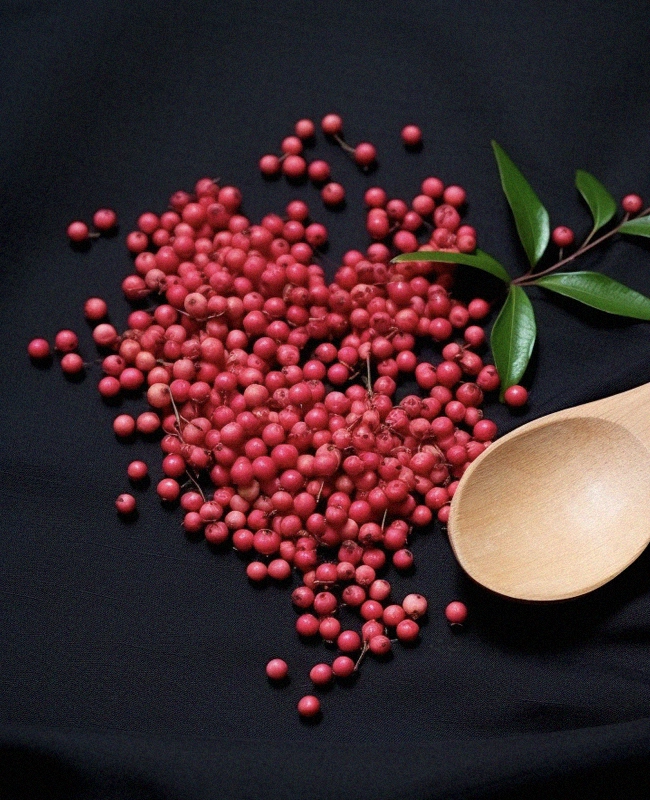
What Is Pink Pepper?
Pink pepper, also known as Peruvian pepper or Brazilian pepper, is derived from the berries of the Schinus molle tree. Pink pepper is not botanically related to black or white pepper. These pink-red berries are used both as a spice and as a perfume ingredient.
What Does Pink Pepper Smell Like?
Pink pepper has a fresh, spicy aroma with subtle sweet and floral undertones. Its scent is brighter and less pungent than black pepper.
How Is the Scent Extracted?
Pink pepper essential oil is obtained through steam distillation of the dried berries.
How Is Pink Pepper Used?
Pink pepper often serves as a top note, introducing a vibrant and spicy dimension to perfumes.
Sandalwood
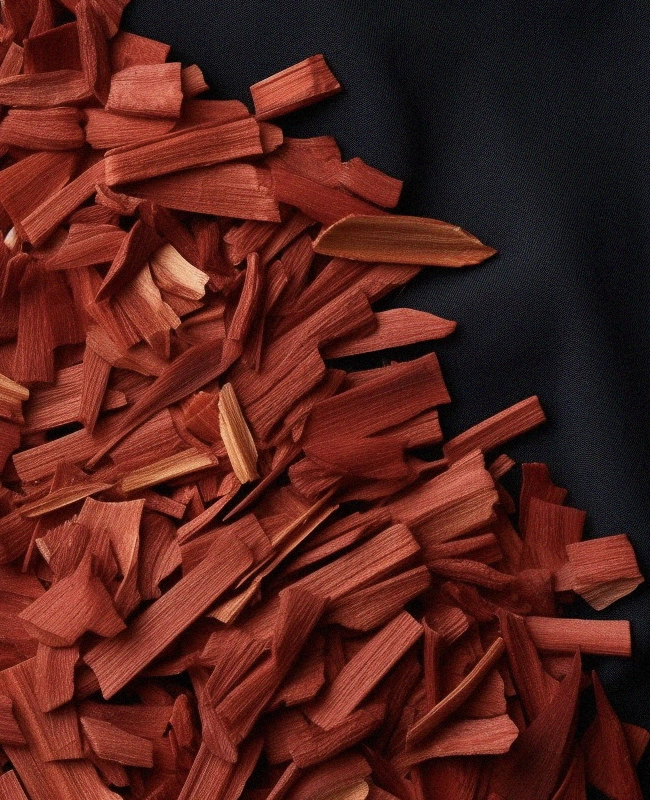
What is Sandalwood?
Sandalwood refers to the fragrant heartwood of trees from the genus Santalum. Today, Australian Sandalwood is used as a sustainable alternative to traditional Indian Sandalwood.
What Does Sandalwood Smell Like?
Sandalwood has a soft, woody, smooth and creamy aroma.
How Is the Scent Extracted?
Sandalwood oil is procured through steam distillation of the heartwood and roots.
How Is Sandalwood Used?
Sandalwood is used as base note in perfumes, as it offers a smooth and woody character.
Tonka Bean

What Is Tonka Bean?
Tonka bean is the seed of the Dipteryx odorata tree, native to Central and South America. It is prized for its sweet aroma and is often used as a vanilla substitute.
What Does Tonka Bean Smell Like?
Tonka bean has a warm, smooth and sweet aroma reminiscent of vanilla, almond and clove.
How Is the Scent Extracted?
Tonka absolute is derived through solvent extraction of the dried beans.
How Is Tonka Bean Used?
Tonka bean often serves as a middle or base note, adding sweetness, warmth and a creamy undertone to perfumes.
Vanilla
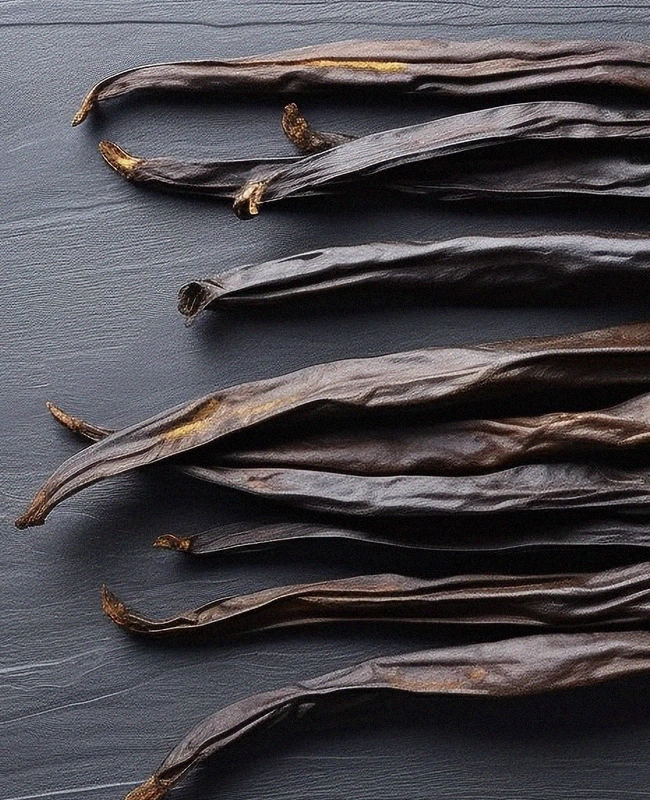
What Is Vanilla?
Vanilla is derived from the beans of the vanilla orchid. It’s one of the most popular scents worldwide.
What Does Vanilla Smell Like?
Vanilla has a sweet, creamy, smooth and rich aroma.
How Is the Scent Extracted?
Vanilla absolute or extract is obtained through solvent extraction of the cured beans. Vanillin and ethylvanillin are two common synthetic alternatives to naturally sourced vanilla.
How Is Vanilla Used?
Vanilla is most often a base note, providing a creamy and sweet foundation.
Vetiver
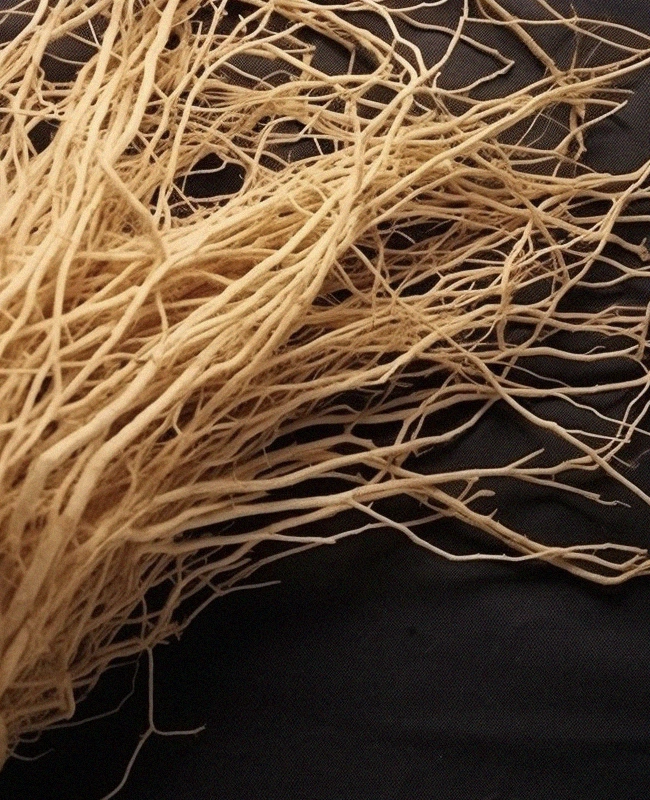
What Is Vetiver?
Vetiver is derived from the roots of the vetiveria zizanioides grass, which is a fragrant perennial native to India.
What Does Vetiver Smell Like?
Vetiver offers a woody, earthy and smoky aroma. Its scent is often described as similar to soil and roots.
How Is Vetiver Extracted?
Vetiver oil is procured through steam distillation of the roots.
How Is Vetiver Used?
Vetiver most often serves as a base note, grounding perfumes with its rich and earthy character.
